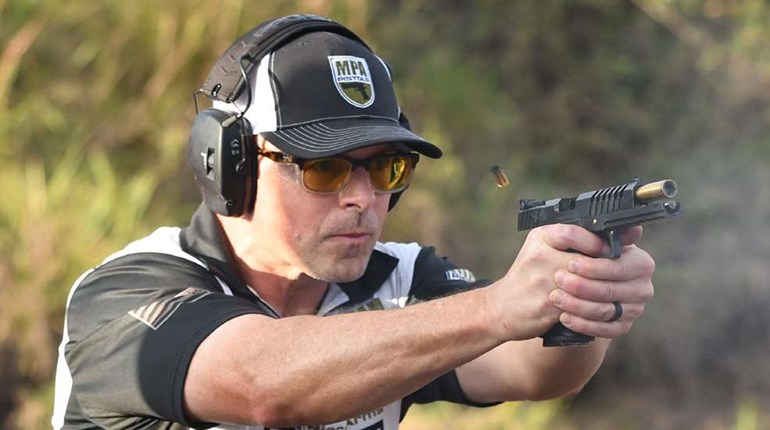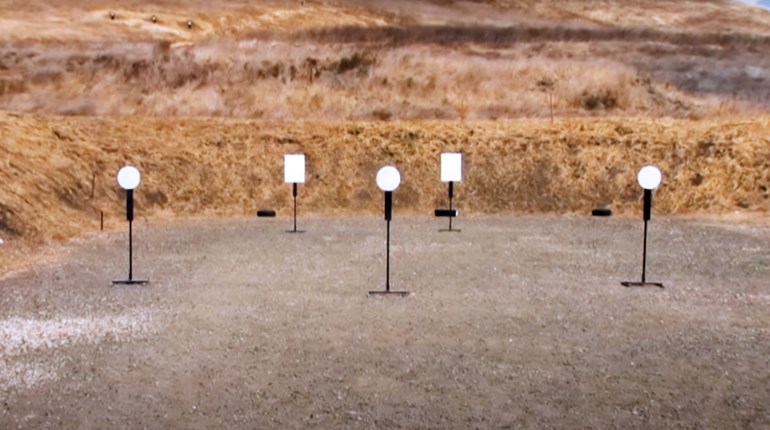
If you ask the average defensive or competitive shooter “What shooting skills would you like to further develop?” a popular response is “To increase my speed and accuracy.” What if you were to discover that speed and accuracy have nothing to do with the shooting process? How would this shocking revelation change the way you shoot?
Anyone committed to the art and discipline of becoming a better shooter devotes time, finances and effort toward the end result of being faster (speed) and developing more precise round placement (accuracy). However, how exactly does speed and accuracy translate in terms of practical application?
Speed and Accuracy Defined
Tenths and even hundredths of a second matter in both a defensive shooting and in a competition. Combat-effective round placement (accuracy with the goal to stop an active killer for defensive shooters) and “A” box hits (primary objective for competitive shooters) are practical applications of accuracy.
Traditionally, one can train to be extremely accurate for such disciplines as Bullseye Shooting (a term applicable to shooting sports where the objective is to score points by hitting a round shooting target as close to the center as possible with slow precision fire at varied distances) and other slow-fire (non-timed) round placement disciplines.
One can additionally train for speed, such as rapid deployment (presenting the handgun from the holster from either open or concealed carry at or under one second), splits (time measured between shots on the same target) and transitions (time measured between shots on multiple targets). Completely disregarding accuracy, speed training is designed to find your maximum mechanical capability (for example shooting six rounds into the berm with no target as rapidly as you are mechanically able). If your maximum mechanical capability firing six rounds at five yards into a berm with no target is over 2 seconds, then you cannot expect any greater performance (sub-2-seconds) by adding a target (introducing another layer of complexity and skill to the initial task).
Shooters who take their pure accuracy training and try to combine it with their isolated speed training quickly discover the precarious balancing act between speed and accuracy.
In attempting to balance speed and accuracy it is found that one can only be attained at the cost of the other. It’s the age-old yin and yang principle whereas greater accuracy requires more time (increasing the time element), and faster speeds are derived at the expense of accuracy. The eternal struggle is to find that cost-effective balance and for it to be repeatable. However, how would it impact your balancing act if you were to find that speed and accuracy are not a terminal objective but merely an illusion?
The Illusion Revealed
What is a universally accepted method of measuring speed? Using a shot timer. However, speed can only be measured after the event – post shooting or as the result of shooting. The same applies to accuracy on steel (hit or no hit) or paper (“A” box hit or not), accuracy can only be measured after the event – post shooting or again as the result of shooting.
The shooting process itself, according to Master Instructor and multi-world champion shooter Rob Leatham, is defined as “bringing stability to alignment and breaking the shot without disturbing muzzle orientation.”
Measurements of time and accuracy can only occur after the performance of the shooting process. During the actual shooting process itself it’s impossible to measure something that has not yet occurred.
When you’re standing there facing downrange with your gun up on target and working that trigger right smack in the middle of the shooting process you can only do one of two things: either follow the shooting process or “try to be fast and accurate.” If your mind is occupied with the result of the shooting process (measurement of speed and accuracy) then you are not focused on the actual process itself. How does this affect your overall performance?
You can “try to go fast” and “try to be accurate” or you can simply follow the shooting process itself and after completing the process to the best of your ability, then measure the result of your work effort. Speed and accuracy are merely measurements of your shooting performance – nothing more. It’s the greatest illusion to believe that they exist during the shooting process which is not possible.
Solving the Conundrum
If speed and accuracy are an illusion during the shooting process itself, then the logical, and more astute question that should follows is “How can I train to be a better shooter?” If the objective is to be a better shooter, and if that is determined by the measurement of your speed and accuracy, then it’s not about the measurement of a result but about improving your performance of the shooting process. How can you do that?
The human body is an amazing instrument and can be trained to perform at extremely high levels such as professional sports or the Olympics. Although you may not be training to be a professional or an Olympian, you can task your body with a higher level of performance. The objective now becomes being able to execute the shooting process so well that it takes you less time to gain the level of control it takes for you to complete the process. You simply demand of your body to teach you how to complete the shooting process even a tenth of a second quicker than the last run.
The greater your control, the greater your skill. The greater your skill, the better your performance. The better your performance, the better the measurements of that performance. Your two choices in solving the speed-accuracy conundrum are to either develop greater control of your shooting process or forever chase after the illusion of speed and accuracy.



































